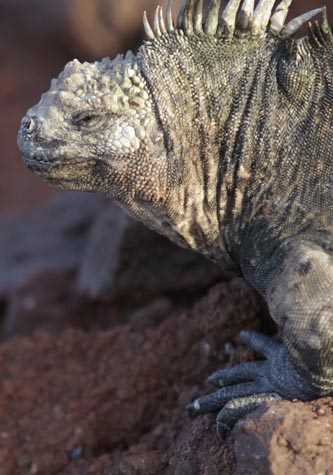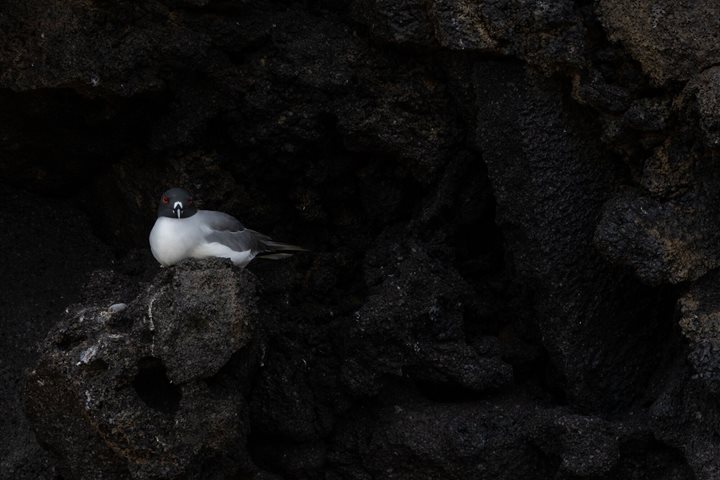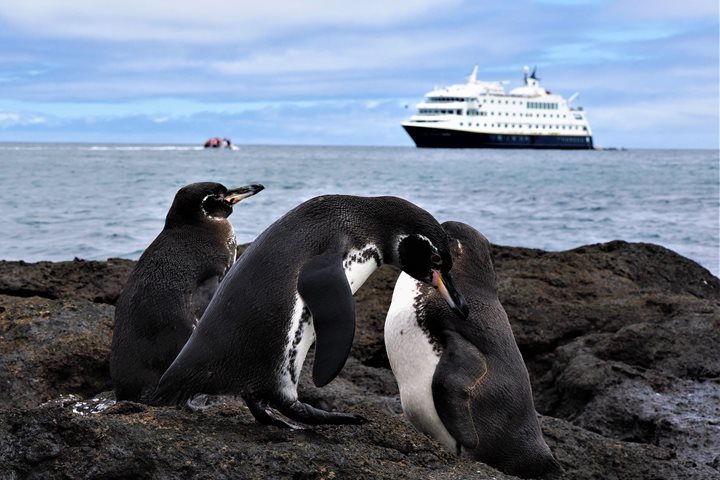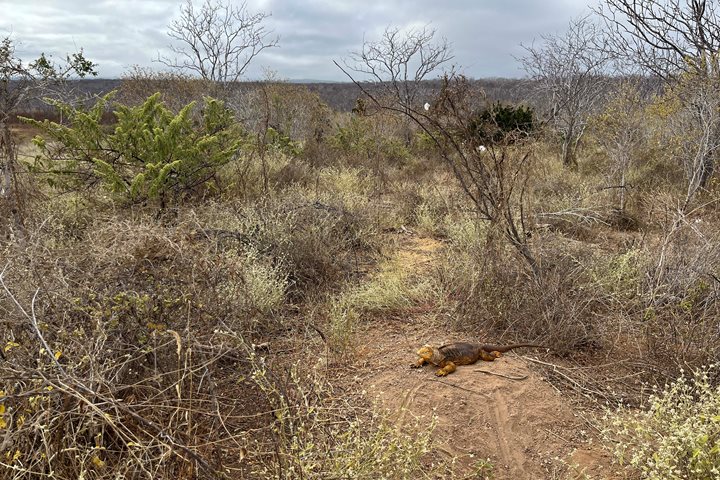As soon as we started approaching North Seymour, we had hundreds of birds gliding along the cliffs as a welcoming committee for our guests.
Even though on our first day we learned that we may not see sea birds breeding during this time of the year, it was quiet remarkable to see frigates birds at their best. Some males had fully inflated pouches, trying to get a mate, while some others were very busy feeding their single chick. Some of the more immature were practicing their flying skills, because soon they will need to get their own food. Without a doubt North Seymour it is the best place to learn about these majestic birds, which fly hundreds of miles to the open ocean in order to get food, or just wait for other sea birds to bring food. For this behavior, they are known as a kleptoparasitic species, because in some cases their diet depends in stealing from other creatures.
This island also has a great opportunity to introduce our explorers to our Galapagos dragons - the marine and land iguanas. At first sight they look very intimidating, but as we got closer and closer we realize that these creatures are so tame that they even have the appearance of a smiling face. The land iguanas feed on all vegetation found on land, meanwhile their cousins (the marine iguanas) find their food source in the ocean. We even had an opportunity to observe the main differences between the land and marine iguanas: the color, their toenails and the shape of their mouth, which is a feeding adaptation.
As we explore the coastal area we also had the opportunity to see one endemic marine mammal, the Galapagos sea lions. Some mums were feeding their pups, some others were resting, while some other pups were just playing in tidal pools, training for future challenges in their lives.
Rabida Island is a good place to introduce our guests to the Galapagos marine life, because the water visibility was clear. The Geology is also very interesting, and that is the reason we offer a round of kayaking along the same area. This visitor site is also a good spot for our glass bottom boaters.
To finish our afternoon program, and our day, we disembarked on a red sandy beach, which was covered with Galapagos sea lions, marine iguanas, mockingbirds, yellow warblers, pelicans, blue footed boobies and the very elusive vermillion flycatcher.
We just had a spectacular sunset in Galapagos, and it was magic to see the sun disappearing in the Pacific Ocean.







